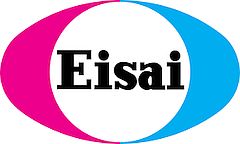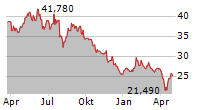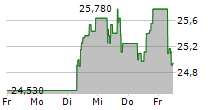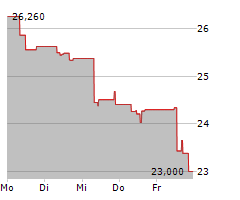
Lecanemab subcutaneous autoinjector has the potential to become a new expanded treatment option for patients with early Alzheimer's disease, their care partners and healthcare professionals, with results showing a comparable efficacy and safety profile to the intravenous formulation
TOKYO and CAMBRIDGE, Mass., July 31, 2025 - (JCN Newswire) - Eisai Co., Ltd. (Headquarters: Tokyo, CEO: Haruo Naito, "Eisai")and Biogen Inc. (Nasdaq: BIIB, Headquarters: Cambridge, Massachusetts, CEO: Christopher A. Viehbacher,"Biogen") announced today that results on investigational maintenance therapy with subcutaneous autoinjector (SCAI) of lecanemab-irmb (U.S. brand name: LEQEMBI(R)), an anti-amyloid beta (AB) protofibril* antibody for the treatment of early Alzheimer's disease (AD), were presented at the Alzheimer's Association International Conference(AAIC) 2025, held in Toronto, and virtually. Only lecanemab fights AD in two ways-targeting both protofibrils and plaque, which can impact tau accumulation downstream.
 |
Importance of Ongoing Treatment and SC Development Program
Due to the reaccumulation of AD biomarkers and return to placebo rate of decline after therapy is stopped1, Eisai is investigating a new lecanemab SC maintenance treatment option following 18 months of IV therapy so patients can continue to fight this progressive, relentless disease.
Clinical trials of lecanemab SC were conducted as a sub-study of the open-label extension (OLE) following the core Phase 3 Clarity AD study in individuals with early AD, to evaluate a range of doses administered by SC vial or autoinjector. Eisai has developed a SC-AI for maintenance therapy at a dose of 360 mg weekly and a500 mg SC-AI is being developed for initiation dosing.
Similar Impact on Clinical Outcomes and Biomarkers with IV and SC Dosing
The pharmacology (PK/PD), clinical (efficacy endpoints such as CDR-SB) and biomarker (amyloid PET and blood biomarkers) relationships established with extensive clinical data supported the FDA approval of IV maintenance therapy after the initial 18 months of treatment and support the investigational SC maintenance dose option.
- Data supports that transitioning to a weekly 360 mg SC AI dose of lecanemab after 18 months of initiation dose (10 mg/kg IV biweekly) maintains clinical and biomarker benefits comparable to continued biweekly IV dosing.
- Clinical and biomarker responses at 48 months with monthly IV maintenance dosing are similar to the responses with ongoing biweekly dosing whether patients are amyloid positive (>30 CL) or negative (<30 CL) at 18 months.
- Data shows the 500 mg SC AI has equivalent exposure as the initial treatment regimen of 10mg/kg IV biweekly up to 18 months for amyloid removal, efficacy, and ARIA-E.
Safety Matters
The safety profile of 360 mg weekly SC maintenance dosing was shown to be consistent with that of IV maintenance therapy, with <1% systemic injection/infusion reactions. Across all SC doses, the rate of systemic injection/infusion reactions is 1% compared to 26% with IV. The 360 mg SC maintenance dose was initiated after 18 months of IV treatment, beyond the high-risk period for ARIA. There were 0 cases of ARIA-E observed out of 49 treated with 360 mg SC weekly maintenance for a mean of 6 months.
Study Participants Successfully Administered SC-AI and Found it Easy to Use
To optimize the safe and effective use of SC autoinjector (SC-AI), additional studies were conducted, including a human factors (HF) study and a tolerability assessment of the device.
The HF Study involved 110 participants (63 early AD patients, 32 care partners, and 15 healthcare professionals: HCPs) to assess the appropriate administration of lecanemab SC-AI. Overall, 95% (104/110) of participants successfully administered the maintenance dose.
The Autoinjector Device Acceptability Study involved 126 participants (25 early AD patients, 50 care partners, and 51 HCPs), to evaluate the device's ease of use, convenience and feasibility of administration. As an interim outcome, over 95% of participants reported that the SC-AI is easy to administer. They were highly satisfied with it and had no concerns about administration, even at home. Furthermore, all patients responded that they welcomed the introduction of SC-AI.
These studies and evaluations of lecanemab SC-AI have demonstrated that the investigational SC-AI offers efficacy and safety comparable to IV administration with the potential to reduce the incidence of infusion site adverse events. From the perspective of patients and care partners, benefits included the ability to use the device at home, shortening treatment time, and to continue treatment without having to worry about visiting an infusion center. From the perspective of HCPs, they reported that the device has the potential to provide a new option for patients who are benefiting from lecanemab to continue the treatment. The SC formulation has the potential to reduce medical preparation and administration time related to IV therapy. These factors suggest that the SC AI may play an important role in continuing treatment for early AD.
This release is based on the content of the presentations given at AAIC, "Featured Research Session #4-13-FRS-C: Lecanemab Subcutaneous Formulation for Maintenance Dosing: The Potential of a New and Convenient Option for Ongoing Treatment in Early Alzheimer's Disease," held at 9:00 AM on Wednesday, July 30, and also includes some content from the Developing Topics session held at 8:00 AM on Sunday, July 27,entitled "Patient, Care Partner, and Health Care Professional Opinion of the Lecanemab Autoinjector for Subcutaneous Delivery in Early Alzheimer's Disease Patients."
Eisai serves as the lead for lecanemab's development and regulatory submissions globally with both companies co-commercializing and co-promoting the product and Eisai having final decision-making authority.
* Protofibrils are thought to be the most toxic AB species that contribute to brain damage in AD and play a major role in the cognitive decline of this progressive and devastating disease. Protofibrils can cause neuronal and synaptic damage in the brain, which can subsequently adversely affect cognitive function through multiple mechanisms.1 The mechanism by which this occurs has been reported not only by increasing the formation of insoluble AB plaques, but also by directly damaging signaling between neurons and other cells. It is believed that reducing protofibrils may reduce neuronal damage and cognitive impairment, potentially preventing the progression of AD. 2
For more details, please visit: https://www.eisai.com/news/2025/pdf/enews202553pdf.pdf
MEDIA CONTACTS
Eisai Co., Ltd.
Public Relations Department
TEL: +81 (0)3-3817-5120
Eisai Europe, Ltd.
EMEA Communications Department
+44 (0) 797 487 9419
Emea-comms@eisai.net
Eisai Inc. (U.S.)
Libby Holman
+1-201-753-1945
Libby_Holman@Eisai.com
Biogen Inc.
Madeleine Shin
+1-781-464-3260
public.affairs@biogen.com
INVESTOR CONTACTS
Eisai Co., Ltd.
Investor Relations Department
TEL: +81 (0) 3-3817-5122
Biogen Inc.
Tim Power
+ 1-781-464-2442
IR@biogen.com
Source: Eisai
Copyright 2025 JCN Newswire . All rights reserved.
© 2025 JCN Newswire



